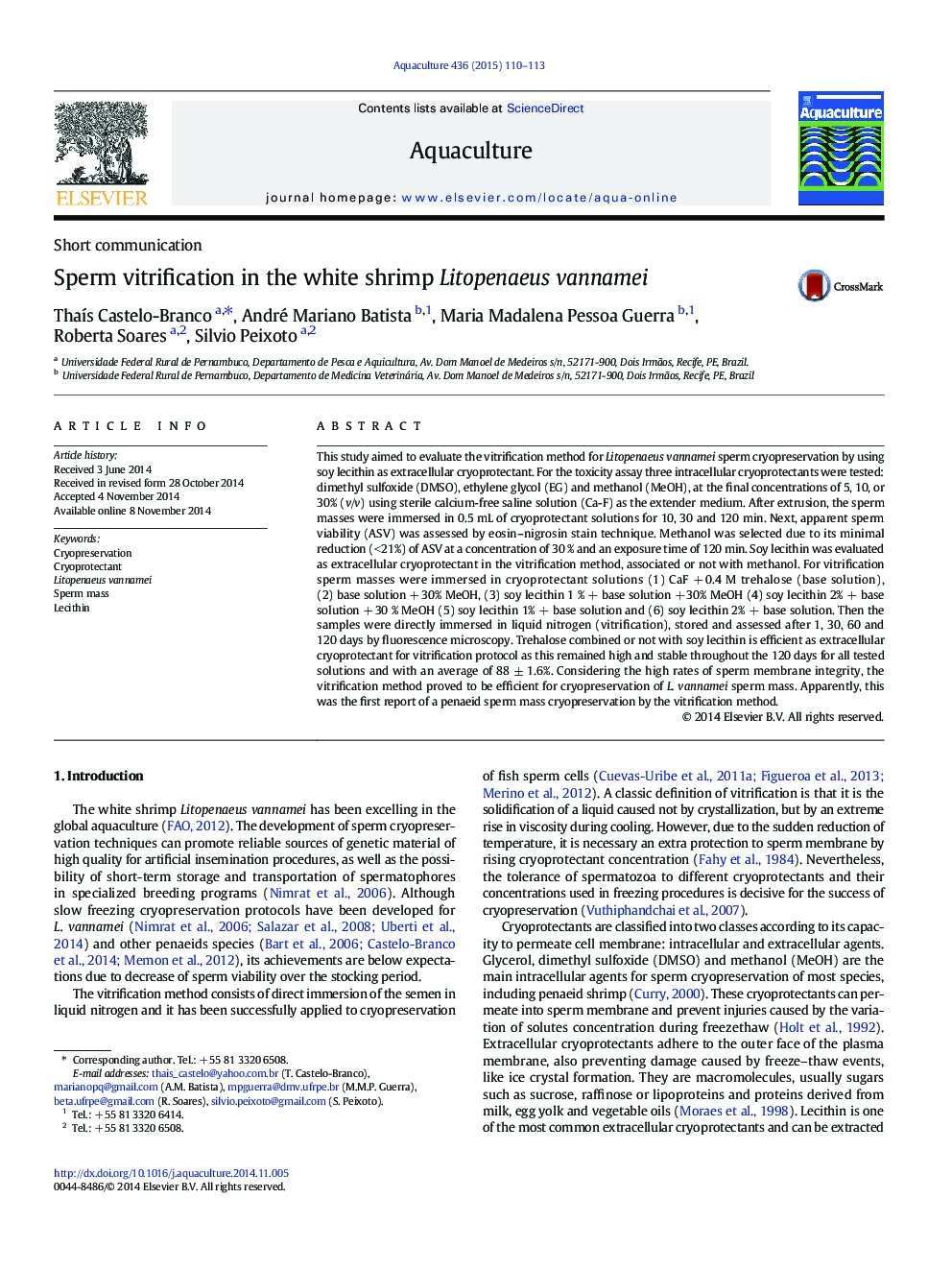| Article ID | Journal | Published Year | Pages | File Type |
|---|---|---|---|---|
| 8494810 | Aquaculture | 2015 | 4 Pages |
Abstract
This study aimed to evaluate the vitrification method for Litopenaeus vannamei sperm cryopreservation by using soy lecithin as extracellular cryoprotectant. For the toxicity assay three intracellular cryoprotectants were tested: dimethyl sulfoxide (DMSO), ethylene glycol (EG) and methanol (MeOH), at the final concentrations of 5, 10, or 30% (v/v) using sterile calcium-free saline solution (Ca-F) as the extender medium. After extrusion, the sperm masses were immersed in 0.5 mL of cryoprotectant solutions for 10, 30 and 120 min. Next, apparent sperm viability (ASV) was assessed by eosin-nigrosin stain technique. Methanol was selected due to its minimal reduction (< 21%) of ASV at a concentration of 30 % and an exposure time of 120 min. Soy lecithin was evaluated as extracellular cryoprotectant in the vitrification method, associated or not with methanol. For vitrification sperm masses were immersed in cryoprotectant solutions (1) CaF + 0.4 M trehalose (base solution), (2) base solution + 30% MeOH, (3) soy lecithin 1 % + base solution + 30% MeOH (4) soy lecithin 2% + base solution + 30 % MeOH (5) soy lecithin 1% + base solution and (6) soy lecithin 2% + base solution. Then the samples were directly immersed in liquid nitrogen (vitrification), stored and assessed after 1, 30, 60 and 120 days by fluorescence microscopy. Trehalose combined or not with soy lecithin is efficient as extracellular cryoprotectant for vitrification protocol as this remained high and stable throughout the 120 days for all tested solutions and with an average of 88 ± 1.6%. Considering the high rates of sperm membrane integrity, the vitrification method proved to be efficient for cryopreservation of L. vannamei sperm mass. Apparently, this was the first report of a penaeid sperm mass cryopreservation by the vitrification method.
Related Topics
Life Sciences
Agricultural and Biological Sciences
Aquatic Science
Authors
ThaÃs Castelo-Branco, André Mariano Batista, Maria Madalena Pessoa Guerra, Roberta Soares, Silvio Peixoto,
